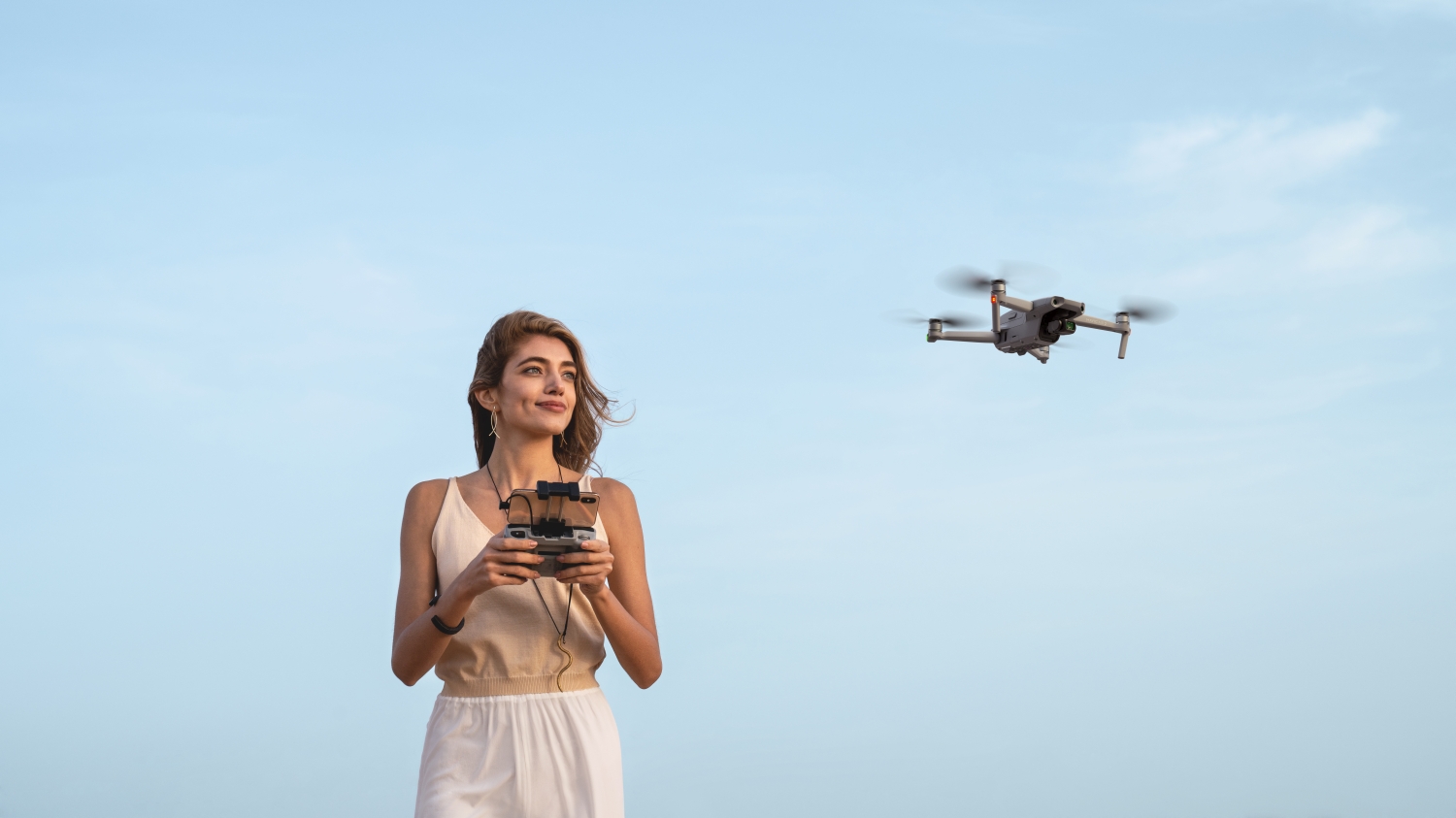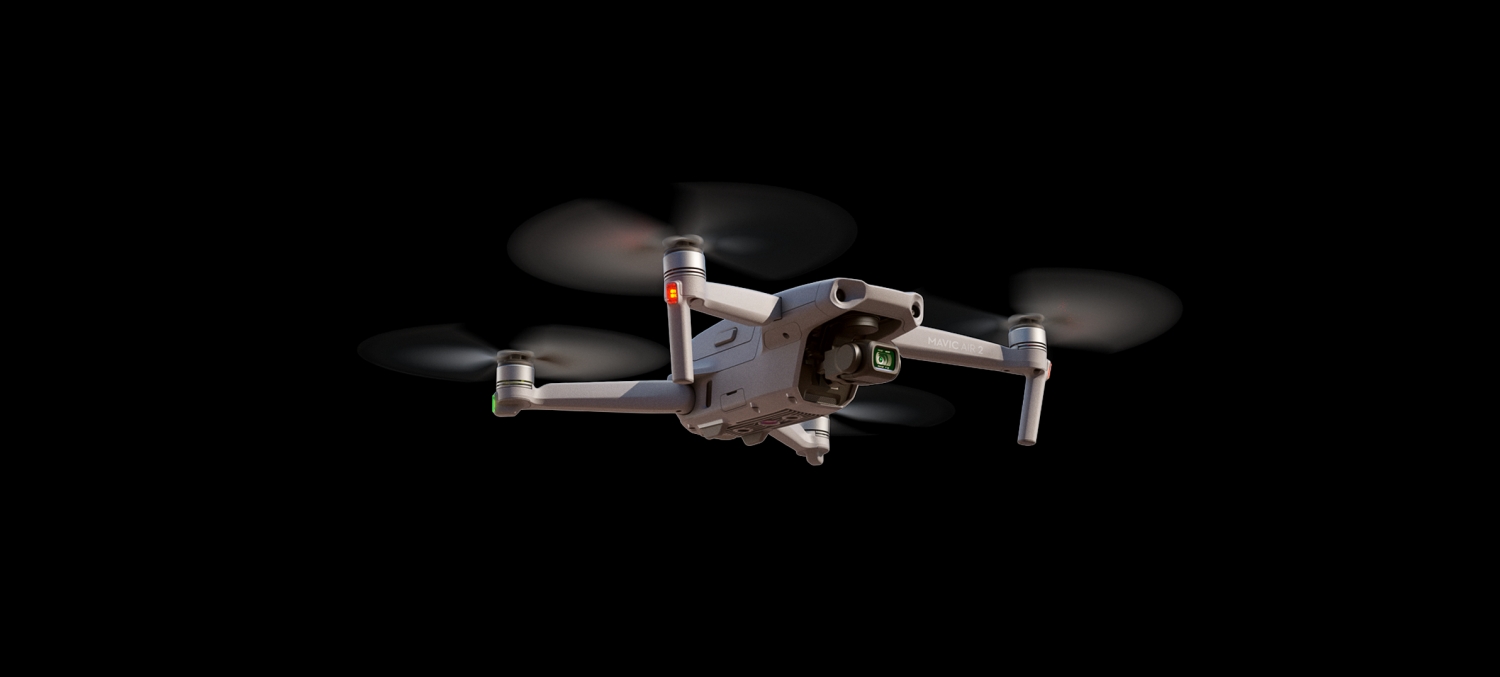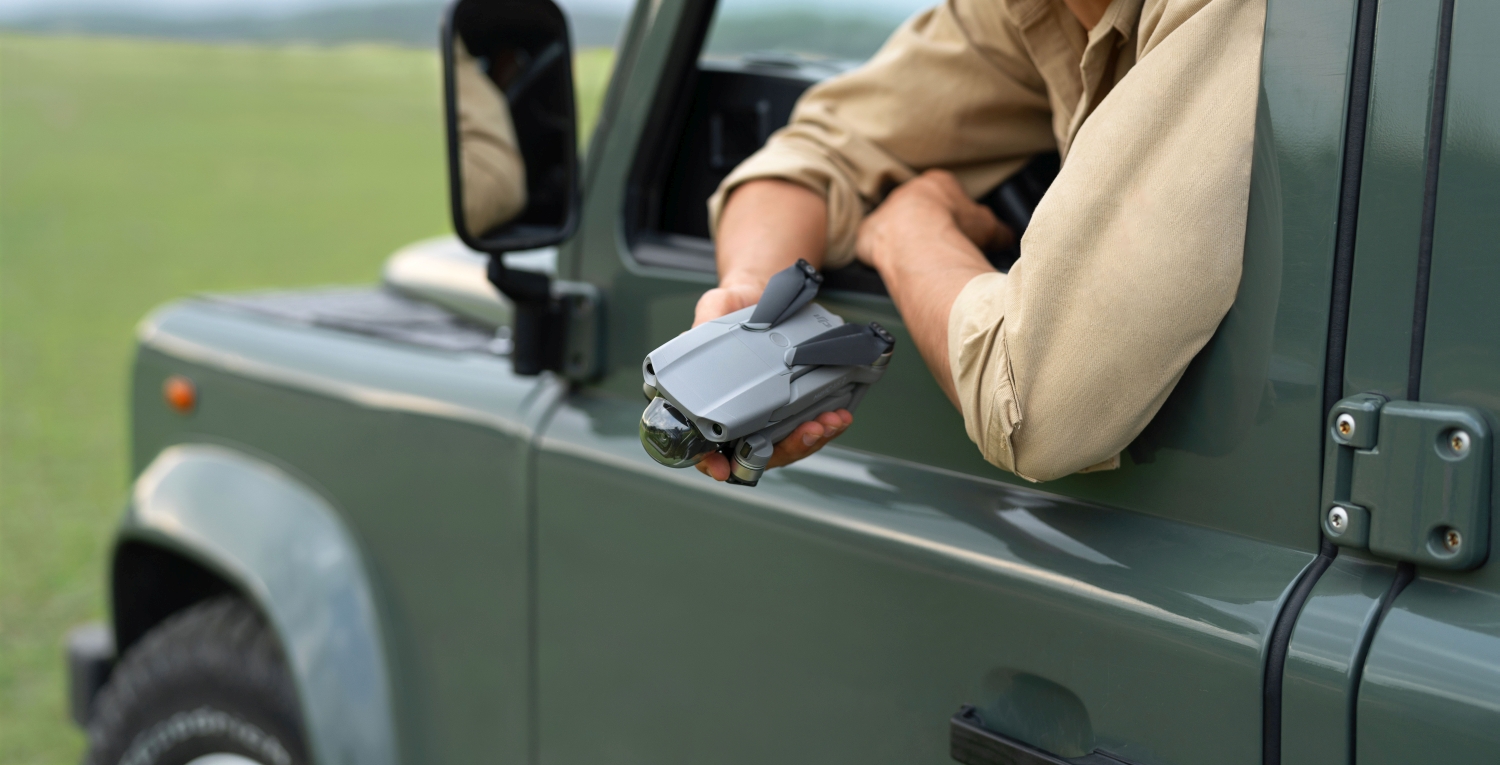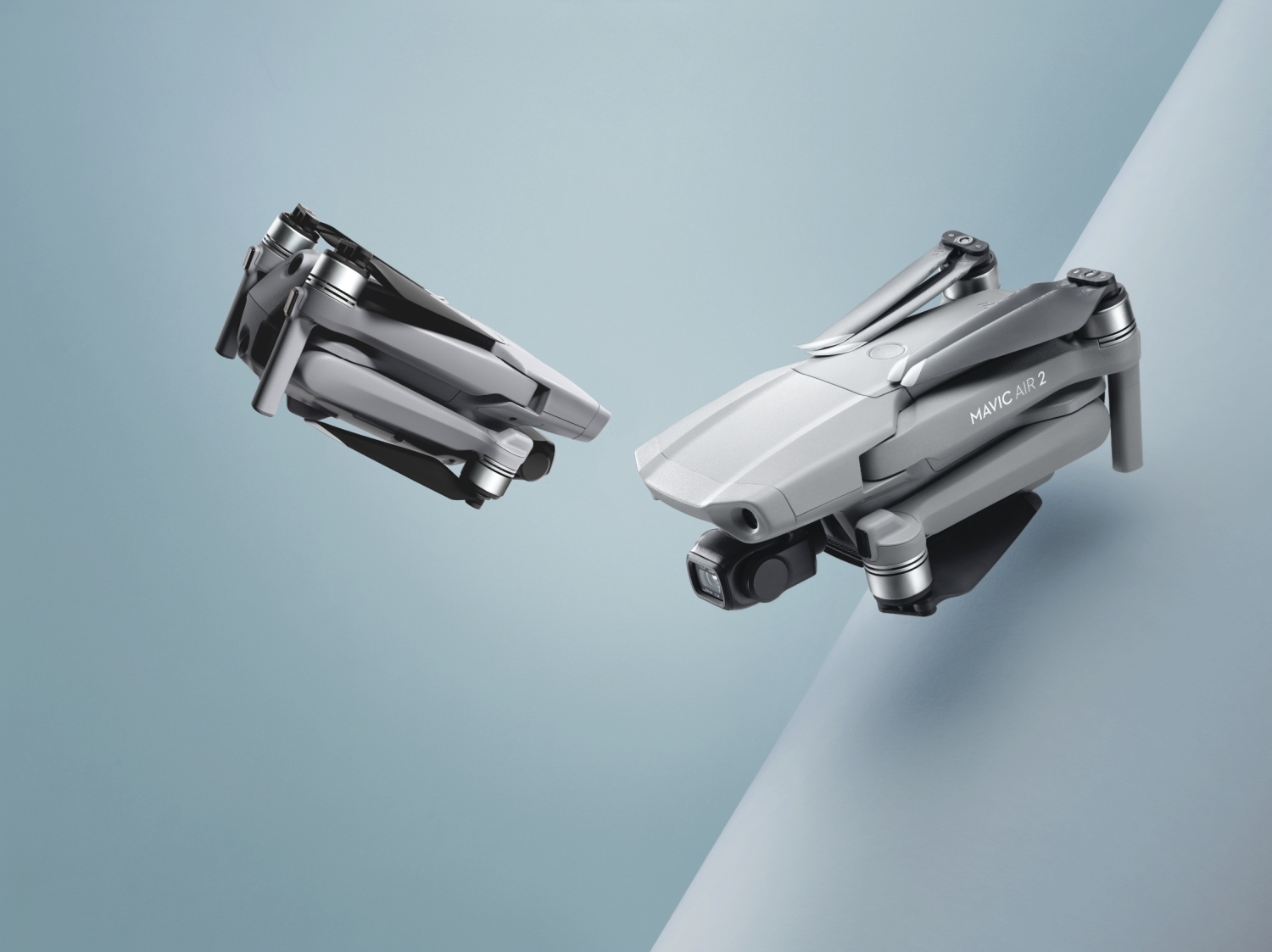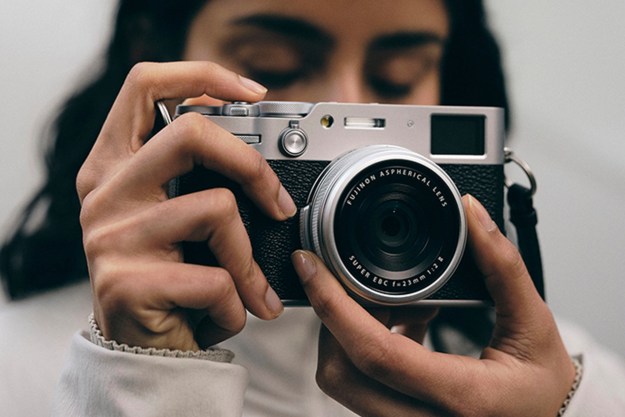After the ambitious launch of the Mavic Mini in the fall, drone maker DJI is taking it to the air yet again with the announcement of its smartest consumer-focused drone, the Mavic Air 2.
Given the current climate and an uncertain future, the Mavic Air 2 will give flyers an easy way to adhere to social-distancing rules thanks to its ease of use, smart features, and longer flight time.
Visually, the DJI Mavic Air 2 takes more design cues from the Mavic 2 Pro and Zoom drones than predecessors like the Mavic Air and Mavic Mini. Don’t worry, though, because its wings still collapse to give it a more compact shape for travel. However, its increase in overall size (180 x 97 x 84 mm) makes it much heavier at 570 grams than the Mavic Mini (249 grams), which means it requires Federal Aviation Administration (FAA) registration before you fly it.
Even though it’s heavier and larger, DJI has made significant hardware improvements to make it a substantially superior drone. First and foremost, there’s the larger Quad Bayer half-inch 12-megapixel sensor on a 3-axis gimbal. The larger sensor improves low-light situations, making it more suitable during flights at night. There’s also a high-resolution mode that produces 48-megapixel snapshots using the new sensor. It’s complemented by other shooting modes like HDR.
Over on the video side, it ups the performance to 4K 60 frames per second footage at a bit rate of 120 Mbps, which bests the 4K 30 FPS capture at 100 Mbps found in the Mavic Air and Mavic 2 Pro. If you’re into slow-motion capture, the Mavic Air 2 can dip down to as low as 240 FPS at 1080p for some ridiculously slow footage. On the other end of the spectrum, DJI will be introducing a new mode in May to produce 8K hyperlapse clips. For those who don’t want to bother in post to produce these kind of clips, it means flyers can just focus on piloting the drone and have everything done on board.
Piloting the Mavic Air 2 will be easier than ever before, thanks in part to the obstacle-avoidance sensors on the front and rear of the drone. Safety continues to be a priority, which is illustrated by the addition of Advanced Pilot Assistance System (APAS) 3.0. Leveraging its 3D-mapping tech, the system allows the drone to make decisions on how to best avoid obstacles in its flight path. The Mavic Air 2 is the first consumer drone to leverage aviation technology called AirSense ADS-B, which will allow it to detect airplanes, helicopters, and other nearby aircraft via signals from them.
With all these improvements, it’s nice to see that DJI hasn’t inflated the Mavic Air 2’s price — it costs $799, the same starting price as its predecessor. For serious flyers, DJI will also be selling a “Fly More” option for $988, which tacks on a shoulder bag, neutral-density filters, charging hub, and three additional batteries. The Mavic Air 2 will give pilots 34 uninterrupted minutes in the air. That’s up from its predecessor’s time of 21 minutes, and also sets the benchmark for its consumer drone line.
The Mavic 2 Air is immediately available in China. Online pre-orders begin today for global markets, with an anticipated ship time of late May.
Editors' Recommendations
- Autel’s EVO Lite and Nano drones are primed to compete with DJI’s best
- DJI Mini 2 gets upgraded with 4K video, OcuSync tech, and stronger motors
- The Leica SL2 is a stabilized, 47-megapixel mirrorless beast with 60 fps 4K

